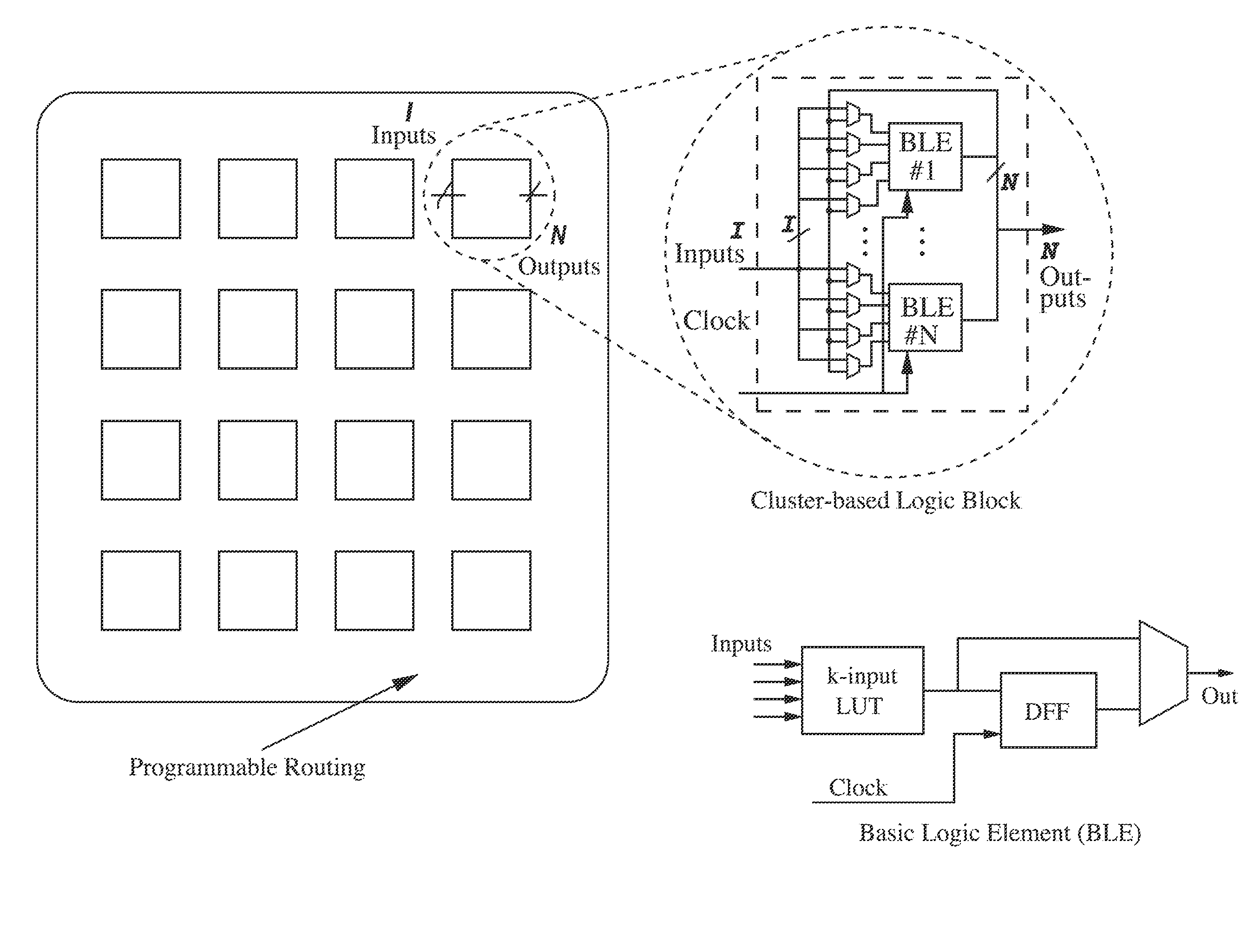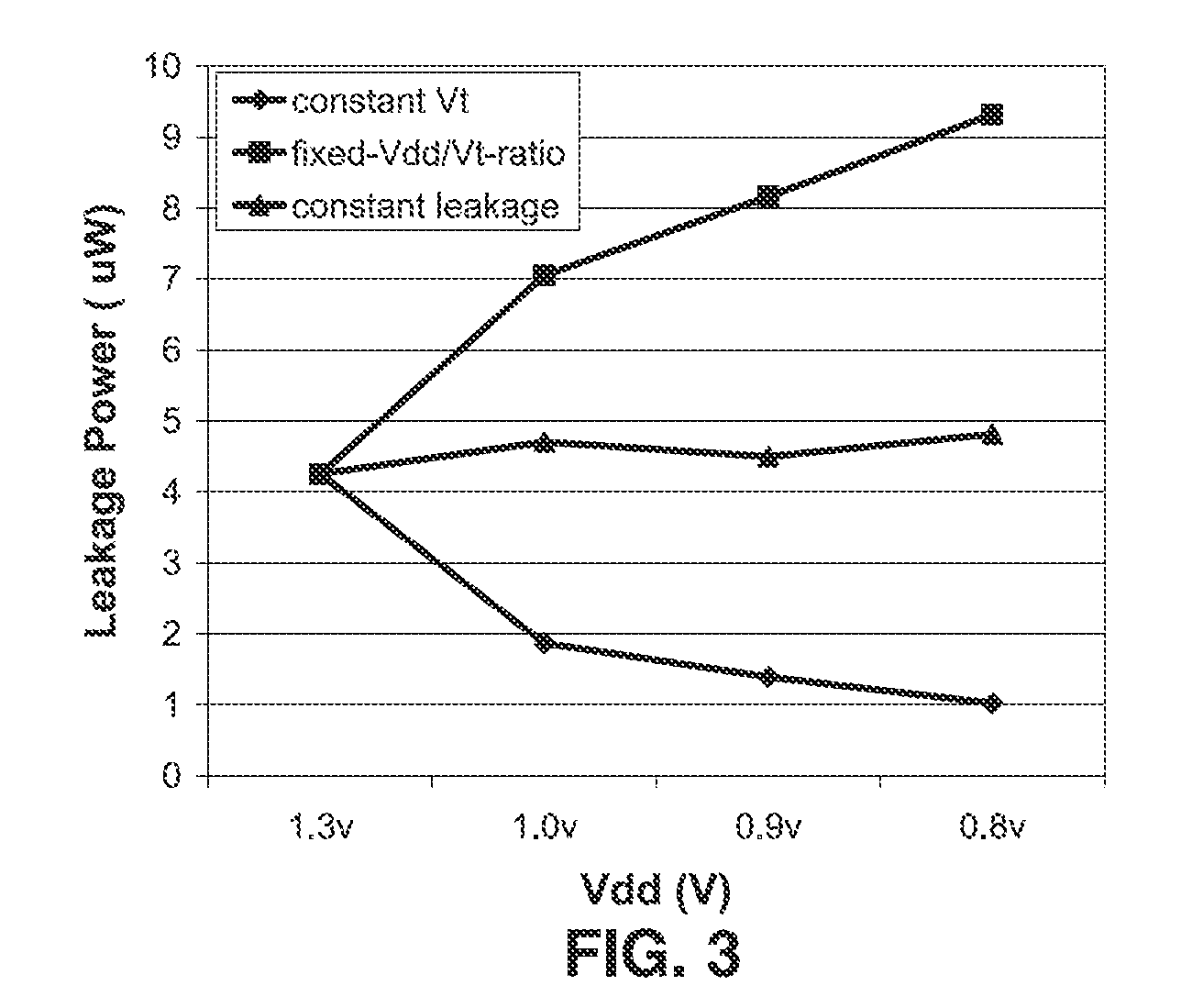Low-power FPGA circuits and methods
a low-power, circuit-based technology, applied in pulse techniques, instruments, multi-objective optimisation, etc., can solve the problems of low power efficiency, mask fabrication, minimum order size, and extra constraints for power/ground routing, so as to reduce the need for additional control memory, reduce leakage current, and increase the utilization of fpgas
- Summary
- Abstract
- Description
- Claims
- Application Information
AI Technical Summary
Benefits of technology
Problems solved by technology
Method used
Image
Examples
Embodiment Construction
[0174]Referring more specifically to the drawings, for illustrative purposes the present invention is embodied in the apparatus generally shown in FIG. 2 through FIG. 49D. It will be appreciated that the apparatus may vary as to configuration and as to details of the parts, and that the method may vary as to the specific steps and sequence, without departing from the basic concepts as disclosed herein.
[0175]1. Low-Power FPGA Using Pre-Defined Dual-Vdd / Dual-Vt Fabrics.
[0176]Unique challenges exist in lowering device power dissipation by incorporating multi-Vdd / multi-Vt techniques. First, leakage power becomes a large portion of the total FPGA power in 100 nm technology and below. One reason for the leakage is attributable to the large number of SRAM cells required within LUT-based FPGAs to provide programmability. Therefore, it is important to design FPGA circuits using dual-Vdd / dual-Vt without increasing the leakage power budget. Second, FPGAs do not have the freedom of using mask p...
PUM
 Login to View More
Login to View More Abstract
Description
Claims
Application Information
 Login to View More
Login to View More - R&D
- Intellectual Property
- Life Sciences
- Materials
- Tech Scout
- Unparalleled Data Quality
- Higher Quality Content
- 60% Fewer Hallucinations
Browse by: Latest US Patents, China's latest patents, Technical Efficacy Thesaurus, Application Domain, Technology Topic, Popular Technical Reports.
© 2025 PatSnap. All rights reserved.Legal|Privacy policy|Modern Slavery Act Transparency Statement|Sitemap|About US| Contact US: help@patsnap.com



